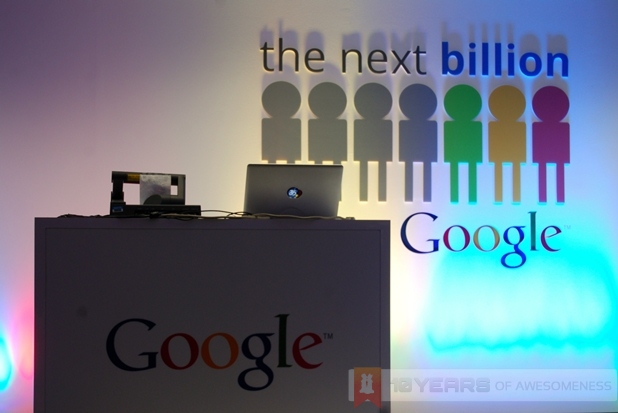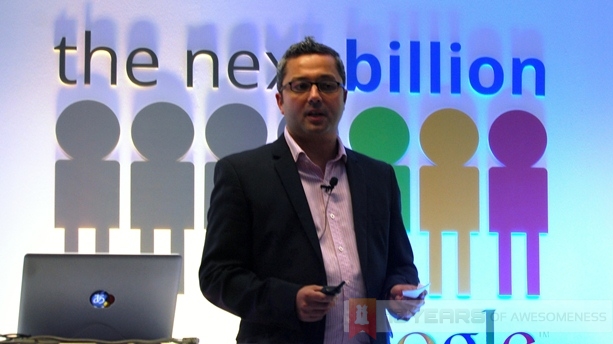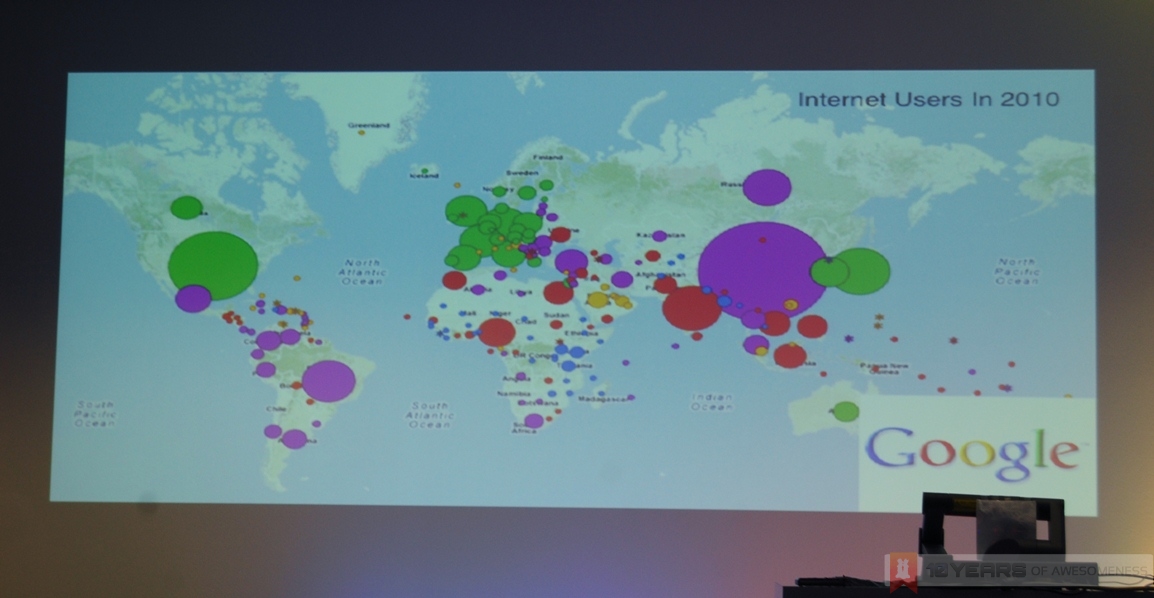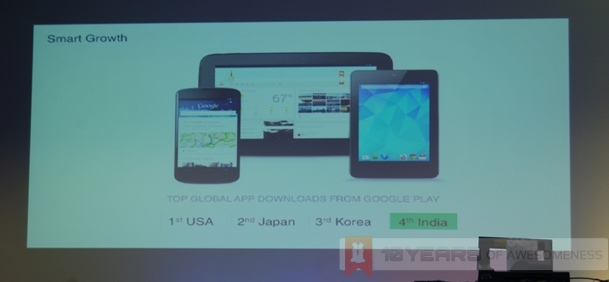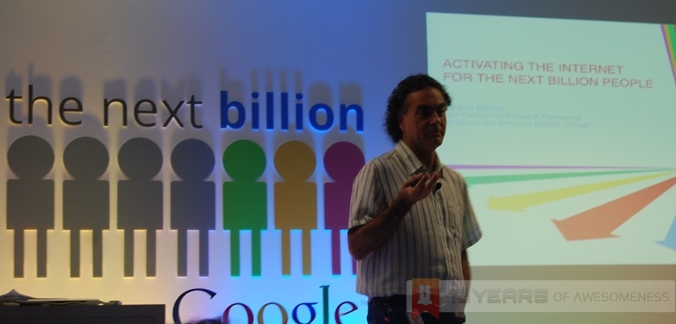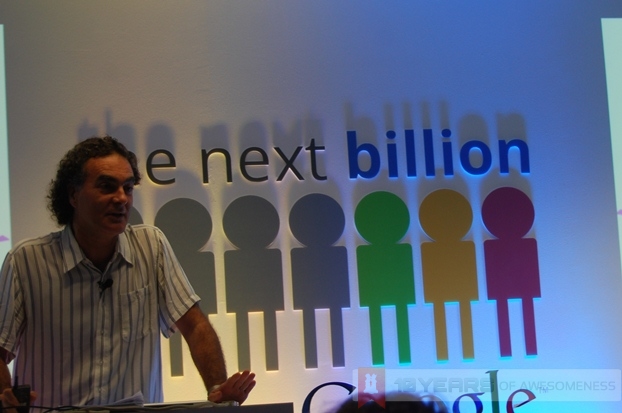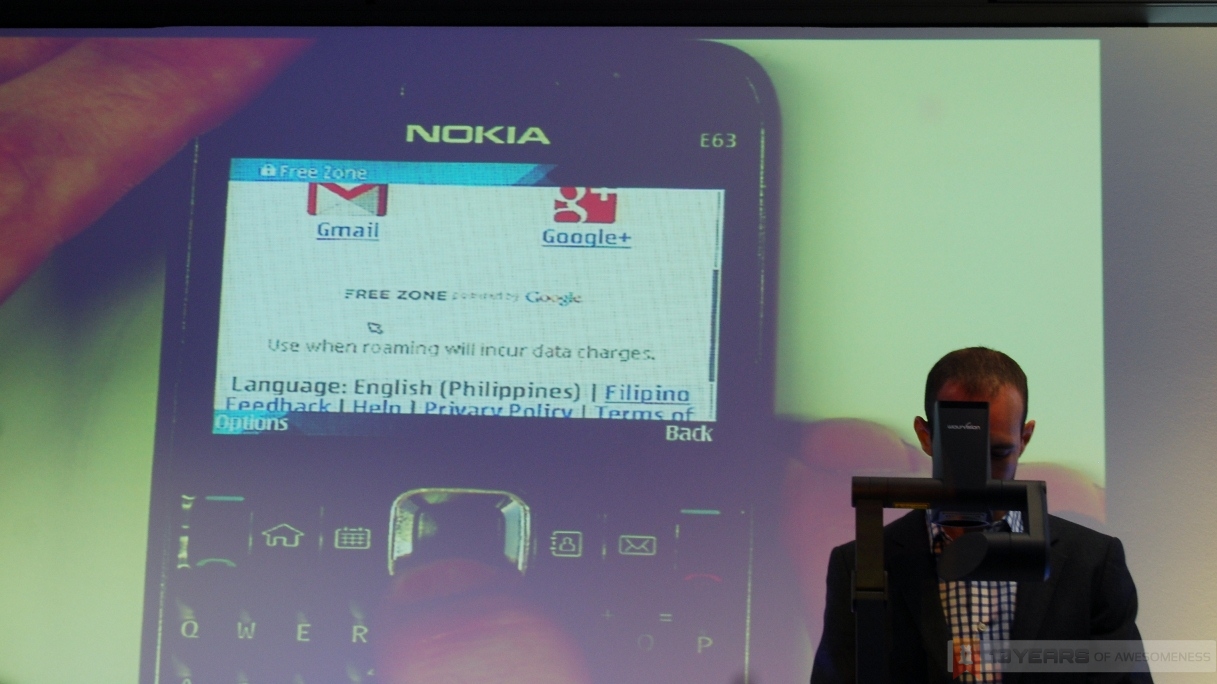Google gave the world a glimpse of the future at its regional event held recently. Members of the media from the entire region came down to Google’s Asia Pacific HQ in Singapore to have the first look at the company’s “The Next Billion” initiative, and how it is catalyzing the next billion people to go online.
But who exactly are the next billion? And how are Google attempting to play a central role in this change? Well, being Google, they’ve got the answers for this and more. Read on after the break.
Who are these “next billion” Internet users?
The concept of “the next billion” isn’t a new one. In 2011, Nokia have been ringing similar tunes when discussing its mobile strategy. CEO Stephen Elop announced the new Asha line of feature phones and hailed them as the phones for “the next billion”. But Nokia aren’t the only ones focusing to this golden number.
This “next billion” being bandied about is the new Internet users coming from emerging markets. Julian Persaud, managing director of Google Southeast Asia, says Google estimates that between now and 2015, there will be 500 million new Internet users from emerging markets, compared to only 15 million new ones from the US. In fact, the number of users from emerging markets have outnumbered those from the US since 2005, and have grown exponentially since. By plotting this data on a graph, Persaud coined this sudden surge in users as a “hockey stick effect”. In addition, these new users will also use interact with the Internet for the first time in a markedly different manner: through mobile devices instead of traditional desktop PCs.
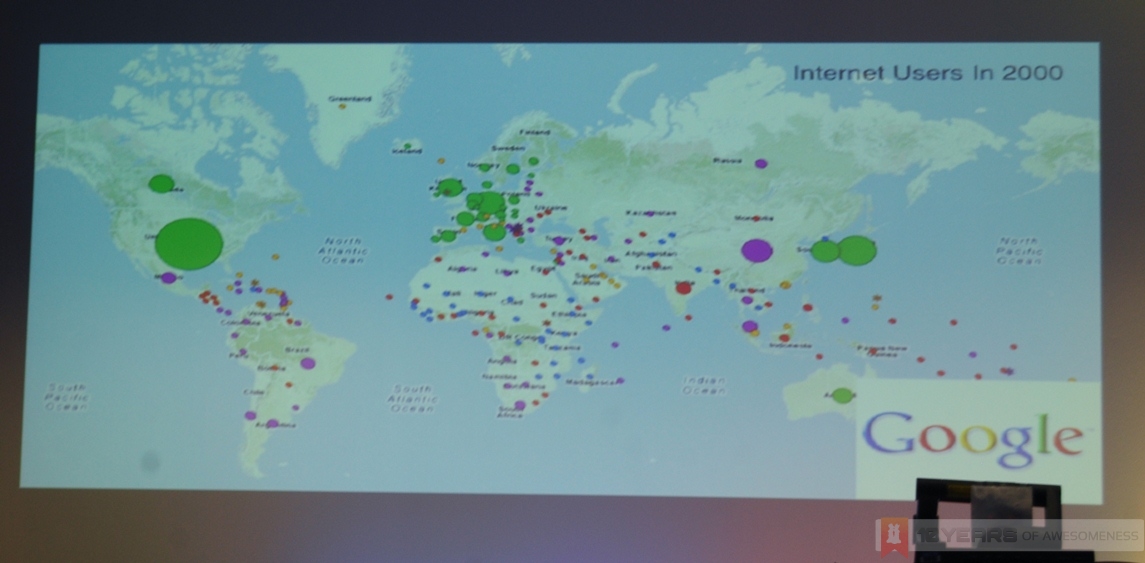
As if 500 million is not big enough a number, Google’s definition of an emerging market – that is, countries that are beginning to embrace the Internet and technology as a path toward greater economic, social and cultural vitality – counts for a total of 3.3 billion people worldwide. That’s 47% percent of the world’s population! In addition, Internet use is rapidly expanding in these countries, and at the heart of this surge is Asia – despite having one of the lowest Internet penetration rates in the world, more new users are coming online from Asia than anywhere else. Google estimates that 25% of these upcoming Internet users will come from India alone, and their stats already back them up: over the past year there was a 400% growth in app downloads in India alone. Google also mentions Indonesia as a major contributor to new Internet users: the number of Twitter users there is second only to Japan.
But what makes Google, Nokia and no doubt plenty of other organisations take notice is that these emerging markets are readily integrating the Internet into their lives – Google’s research shows that one of the first things these users do online is to use the Internet to express their entrepreneurial spirit, grow their businesses and share their culture. And this is where Google plans to step in.
Bridging the great divide
Google recognizes the fact that there is a major shift in terms of Internet users (and usage). Despite the many impediments preventing users in emerging markets from going online, the numbers are still significantly higher than in developed countries. Nelson Mattos, vice president of product and engineering for Europe and emerging markets, strongly believes that poverty has nothing to do with money. He believes that poverty is a problem connected closely to a lack of information. He cites an example where a farmer used Google to search for the market price of his crops and thus giving him a powerful tool to negotiate with the middle man, resulting in a 30% increase in income ever since.
As a man extremely passionate in what he is doing, Mattos conveys his facts and statistics he and his team gathered in emerging markets with powerfully engaging conviction. He cites the three biggest challenges in bringing the Internet to local users, and in particular the local businesses, as follows:
- Local Internet networks are expensive and congested.
- The content on the Internet are mainly created thousands of miles away, making them irrelevant locally, and
- There is a lack of a proper Internet community, from developers to government agencies.
Connecting people
Mattos reveals that Google are already making headway in bringing local businesses online in the emerging markets. Two of the most important steps taken were put in place many years back: Google’s Chrome browser and the Gmail email service.
One may think that the Chrome browser was built from the ground up for the power user. Indeed, that isn’t a far-fetched assumption; Chrome was built for speed in every sense of the word: the application is light and loads quickly, websites browsed on Chrome loaded quicker. But Mattos states that the Chrome browser was made for the emerging market. He cites an example of users surfing the Internet in cyber cafes, where they are charged by the amount of time they used the computers. By significantly decreasing the time spent waiting for websites to load, these users will have more time for the main reason they are at a cyber cafe: browsing the Internet.
In the case of Gmail, Google designed it in a way that users can still access their emails offline. Old emails will be cached, while Gmail downloads new ones. This reduces the amount of required data, and thus making it cheaper to check emails on a mobile device. Besides that, Google are also experimenting on introducing Gmail use on feature phones – that is, without an active Internet connection. By utilising SMS services, feature phone users can chat with Gmail contacts via SMS, and even receive SMS alerts on new emails coming in.
In addition, Google also recently launched a new feature as part of the next billion initiative: Free Zone, powered by Google. Currently only available in the Philippines and South Africa, it allows users to access Gmail, Google+ as well as Google Search for free. There are no strings attached, no data quotas to worry about, and they are as full-featured as it gets: within Free Zone, users can read, reply, forward and compose emails, or browse Google+ and interact with posts. But with Google Search, users can even access some websites from the search results – making the Internet more accessible than ever.
In fact, Mattos states that the whole aim of Free Zone – which was born by collaborating with local telco partners – is to give users a taste of the power of mobile Internet; to always be connected to a world of information. The end product that both Google and the partner telcos are looking for is that eventually, these users will invest in data plans.
Google are also flying solo in certain initiatives. For instance, the company recently invested $750 million in opening new data centres in the region, increasing the number of robust Internet exchange points and thus increasing data efficiency when a user posts a query on Google Search. In addition, the company is spurring the growth of local developers to aid the community and increase Internet adoption by launching Google Academies.
Scratching the surface
These are but a few of the steps Google have taken in its “next billion” initiative. Over the course of the day, we will reveal more on Google’s inspiring efforts to bring the Internet to the masses. Stay tuned!
Follow us on Instagram, Facebook, Twitter or Telegram for more updates and breaking news.


